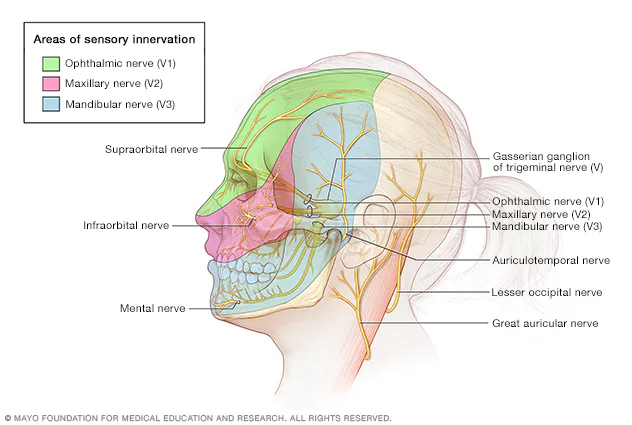- Wavell Plan (1945): failed Shimla Conference
- Royal Indian Navy Mutiny (1946): Bombay, Karachi, Calcutta
- Cabinet Mission (1946): federal scheme, grouping of provinces
- Interim Government formation: Nehru as Vice-President
- Muslim League’s call for Direct Action Day (Aug 16, 1946)
Wavell Plan (1945) and the Failure of the Shimla Conference
Introduction
The Wavell Plan, proposed by Lord Wavell in 1945, was a pivotal attempt to resolve the political deadlock in India post-World War II. It aimed to create an interim government that included Indian leaders from various political factions, ultimately leading to self-governance. However, this initiative culminated in the Shimla Conference, which failed to produce the desired outcomes.
Historical Context
- End of World War II: The conclusion of the war in 1945 significantly altered global politics, prompting Britain to reconsider its colonial policies.
- Rise of Nationalism: Growing demands for independence from the Indian National Congress and the Muslim League reflected the urgency for political reform in India.
Objectives of the Wavell Plan
- Establishing an Interim Government: The plan proposed creating a representative interim government that could manage India until a new constitution was established.
- Inclusivity: Aimed for equal representation of Hindus and Muslims to address communal tensions and ensure all voices were heard.
- Framework for Self-Governance: Intended to facilitate a transition towards full self-governance through collaborative negotiations among Indian leaders.
Key Features of the Wavell Plan
- Composition of the Interim Government: Suggested that the government include representatives from major political parties, such as the Indian National Congress and the All-India Muslim League.
- Role of the British: The plan maintained that the British would retain control during the transition but would support the establishment of an Indian-led government.
- Constitutional Development: Proposed the creation of a new constitution reflecting the aspirations of diverse communities in India.
The Shimla Conference (June 1945)
- Purpose: Convened to discuss the implementation of the Wavell Plan and facilitate negotiations among key Indian leaders.
- Participants: Included leaders from the Indian National Congress, the Muslim League, and other political factions.
Reasons for the Failure of the Wavell Plan
- Lack of Consensus: Deep divisions among political parties prevented agreement on the composition and powers of the interim government.
- Communal Tensions: The insistence of the Muslim League on separate electorates for Muslims created friction with the Congress, complicating negotiations.
- Leadership Conflicts: Personal rivalries and differing agendas among leaders hindered constructive dialogue.
- British Ambivalence: The British government’s reluctance to fully commit to the plan and its desire to maintain control further complicated discussions.
Aftermath of the Shimla Conference
- Continued Political Stalemate: The failure of the conference highlighted the growing divide between Hindu and Muslim communities and underscored the challenges of achieving a unified political solution.
- Shift Towards Partition: The inability to reach an agreement set the stage for subsequent negotiations, ultimately leading to the Mountbatten Plan and the partition of India in 1947.
Royal Indian Navy Mutiny (1946): Bombay, Karachi, Calcutta
Introduction:-
- The Royal Indian Navy Mutiny of 1946 was a crucial uprising against British colonial rule, marking one of the last major acts of resistance before India gained independence in 1947. This mutiny, which primarily took place in Bombay (now Mumbai), Karachi, and Calcutta (now Kolkata), was driven by a combination of discontent among naval ratings and widespread nationalistic fervor. It not only signified the growing unrest within the armed forces but also highlighted the broader aspirations of the Indian populace for self-governance and dignity.
Historical Context
- Post-War Environment: The conclusion of World War II left Britain weakened economically and politically, leading to increased demands for independence from its colonies. India, having contributed significantly to the war effort, saw a surge in nationalist sentiments.
- Colonial Discontent: The period saw heightened dissatisfaction with British rule, characterized by economic hardships, food shortages, and political repression. The Quit India Movement of 1942 had already laid the groundwork for intensified anti-colonial sentiments.
Causes of the Mutiny
- Poor Working Conditions: Ratings in the Royal Indian Navy faced deplorable living conditions, inadequate food supplies, and minimal medical facilities. Reports of poor quality food, especially on ships, were common.
- Racial Discrimination: Systematic discrimination by British officers fostered resentment among Indian sailors. They were subjected to harsh treatment and were often treated as second-class personnel compared to their British counterparts.
- Political Awakening: The influence of nationalist movements and the ideas of leaders such as Mahatma Gandhi and Subhas Chandra Bose inspired many ratings to seek rights and recognition.
- Triggering Incident: The immediate catalyst for the mutiny was the British decision to punish ratings aboard HMIS Talwar for protesting against food quality, leading to an explosive reaction.
Key Locations of the Mutiny
Bombay (Mumbai):
- Initial Outbreak: The mutiny erupted on February 18, 1946, when ratings aboard several ships at the Bombay harbor refused to obey orders. They raised slogans like “Jai Hind” and “Down with the British.”
- Spread of Unrest: The revolt quickly expanded to include multiple ships and involved thousands of naval personnel. The ratings organized strikes, leading to widespread protests in the city.
- Civilian Support: Local civilians, including labor unions and students, showed solidarity with the sailors, organizing protests and strikes, which intensified the unrest.
Karachi:
- Naval Base Significance: Karachi was a major naval base, and the mutiny spread here rapidly. Ratings protested against British authority, echoing sentiments expressed in Bombay.
- Military Response: The British responded with military force, deploying troops to suppress the uprising and restore order, which included arrests and punitive measures against the ratings.
Calcutta (Kolkata):
- Solidarity Movements: The mutiny prompted significant support in Calcutta, where dockworkers and trade unions expressed solidarity with the naval ratings. Protests erupted in the city, showcasing a united front against colonial rule.
- Political Repercussions: The unrest in Calcutta added pressure on the British government, revealing the interconnectedness of the naval mutiny with broader labor and independence movements across India.
Government Response
- Repression Tactics: The British authorities deployed military units to quell the rebellion, resorting to arrests of key leaders and instigators of the mutiny. The use of force aimed to intimidate and discourage further dissent.
- Negotiations and Promises: Amid growing unrest, the British government initiated negotiations with some naval leaders. However, these discussions were largely viewed as insincere and failed to address the fundamental grievances of the sailors.
- Public Sympathy: The mutiny garnered significant public attention, with widespread sympathy for the sailors growing among various segments of society. This public support underscored the urgent need for political reform.
Aftermath of the Mutiny
- Suppression and Consequences: By early March 1946, the mutiny was effectively suppressed, but it had lasting implications for British colonial authority in India. The crackdown led to a significant loss of morale among British forces and increased fears of further uprisings.
- Political Impact: The events of the mutiny highlighted the untenable nature of British rule and contributed to the growing realization among British officials that India’s independence was inevitable. The failure to quell the mutiny without significant backlash forced the British to reconsider their approach to governance in India.
- Legacy and Commemoration: The Royal Indian Navy Mutiny is remembered as a significant moment of resistance that inspired subsequent movements for independence. It served as a precursor to major events leading up to India’s independence in 1947 and is commemorated as a symbol of courage and defiance against colonial oppression.
Cabinet Mission (1946): federal scheme, grouping of provinces
Introduction
- The Cabinet Mission of 1946 was a significant diplomatic initiative by the British government aimed at resolving the political impasse in India and facilitating a transition towards self-governance. This mission proposed a federal structure for India, which included the grouping of provinces based on religious demographics. The Cabinet Mission’s proposals were pivotal in shaping the political landscape of India leading up to its independence.
Historical Context
- Post World War II Dynamics: After World War II, Britain faced immense pressure to address Indian aspirations for independence. The war had weakened British authority and increased nationalist sentiments.
- Rise of Nationalist Movements: The Indian National Congress and the All-India Muslim League were prominent political entities advocating for independence, but their visions for India’s future diverged significantly.
- Previous Attempts at Negotiation: Prior attempts at negotiations, such as the Cripps Mission in 1942, had failed, prompting the British to seek a new strategy for resolving the Indian question.
Objectives of the Cabinet Mission
- Create a Framework for Independence: The mission aimed to establish a framework that would lead to India’s independence while addressing the concerns of various political factions.
- Promote Unity Among Communities: The mission sought to create a federal structure that would accommodate the diverse interests of different communities in India, particularly Hindus and Muslims.
Key Proposals of the Cabinet Mission
Federal Structure:
- Three-Tier System: The Cabinet Mission proposed a three-tier federal system, comprising:
- Central Government: Responsible for defense, foreign affairs, communications, and other key areas.
- Provincial Governments: Each province would have autonomy over local matters, allowing for regional governance.
- Group Governance: Provinces would be grouped into regions based on religious demographics, allowing for collective governance
Grouping of Provinces:
Group A: Hindu-majority provinces, including:
- Madras (Tamil Nadu)
- Bombay (Maharashtra)
- United Provinces (Uttar Pradesh)
- Central Provinces (Madhya Pradesh)
- Bihar
- Orissa (Odisha)
Group B: Muslim-majority provinces, including:
- Punjab
- Bengal
- Sindh
Group C: Provinces with mixed populations, such as:
- North-West Frontier Province (NWFP)
- Assam
Optional Grouping: Provinces could choose to join either group, giving them a degree of flexibility in governance.
Constitutional Assembly:
- The mission proposed the formation of a Constituent Assembly to draft a new constitution for India, comprising representatives from both groups.
Interim Government:
- An interim government would be established to facilitate the transition to independence, with representation from major political parties, including the Congress and the Muslim League.
Reactions to the Cabinet Mission
- Indian National Congress: Initially receptive to the proposals, the Congress recognized the need for a federal structure but had reservations regarding the grouping of provinces, particularly concerning the potential for communal divisions.
- All-India Muslim League: The League strongly supported the idea of grouping provinces, viewing it as a means to protect Muslim interests. However, they later expressed dissatisfaction with the Congress’s response to the proposals.
- Other Political Parties: Various regional parties and groups had mixed reactions, with some supporting greater autonomy while others were concerned about the implications of the proposed federal structure.
Failure of the Cabinet Mission
- Lack of Consensus: Disagreements between the Congress and the Muslim League over the terms of the proposals led to a breakdown in negotiations.
- Political Maneuvering: The subsequent political maneuvering by both parties further complicated the situation, with the Congress unwilling to accept the Muslim League’s demand for a separate state.
- British Withdrawal: The failure of the Cabinet Mission to achieve a consensus ultimately resulted in the British government’s decision to abandon the mission, leading to increased tensions and the eventual partition of India.
Aftermath and Consequences
- Increased Communal Tensions: The failure of the Cabinet Mission exacerbated communal tensions, contributing to the division between Hindus and Muslims.
- Prelude to Partition: The inability to forge a united political solution set the stage for the eventual partition of India in 1947, which resulted in the creation of Pakistan.
- Legacy: The Cabinet Mission remains a significant event in Indian history, illustrating the complexities of negotiating independence in a diverse society and the challenges of accommodating various political aspirations.
Interim Government formation: Nehru as Vice-President
Introduction
- The formation of the Interim Government in India in 1946 marked a crucial step towards self-governance and set the stage for India’s eventual independence in 1947. This government was established during a tumultuous period characterized by political negotiations, communal tensions, and the demand for a representative government. Jawaharlal Nehru’s role as Vice-President of the Interim Government was pivotal in shaping its policies and direction.
Historical Background
- Post-World War II Context: Following World War II, Britain faced immense pressure to grant India self-governance due to the weakened state of British power and the rising tide of Indian nationalism.
- Cabinet Mission (1946): The Cabinet Mission proposed a framework for governance that included the establishment of an interim administration to facilitate the transition towards full independence.
- Political Landscape: The Indian National Congress and the All-India Muslim League were the dominant political forces, but their visions for India’s future were divergent, leading to complex negotiations.
Formation of the Interim Government
- Announcement: On September 2, 1946, the British government announced the formation of an Interim Government to oversee the transition to independence. This government was to be composed of Indian leaders from various political parties.
- Composition: The Interim Government included representatives from the Indian National Congress, the Muslim League, and other political entities. The aim was to create a broad-based coalition reflecting India’s diverse political landscape.
- Leadership: The government was headed by a Governor-General, with Lord Wavell serving in this capacity during the initial phase.
Jawaharlal Nehru’s Role
- Appointment as Vice-President: Jawaharlal Nehru was appointed as the Vice-President of the Interim Government, positioning him as one of the key figures in the administration.
- Responsibilities: As Vice-President, Nehru was responsible for overseeing various portfolios, particularly those related to external affairs and defense, which were critical during this transitional phase.
- Influence on Policy: Nehru played a significant role in shaping the government’s policies, advocating for social reform, economic development, and unity among diverse communities in India.
Challenges Faced by the Interim Government
- Communal Tensions: The Interim Government faced increasing communal tensions, particularly between Hindus and Muslims, which threatened to undermine its stability and effectiveness.
- Muslim League’s Demands: The Muslim League, led by Muhammad Ali Jinnah, demanded greater autonomy for Muslim-majority provinces and ultimately advocated for the creation of Pakistan. This posed significant challenges to the functioning of the government.
- Internal Disputes: Differences within the Congress and between the Congress and the Muslim League created obstacles to effective governance and decision-making.
Key Achievements of the Interim Government
- Initiation of Reforms: Despite the challenges, the Interim Government initiated several important reforms aimed at addressing social issues, promoting economic development, and enhancing education.
- Constitutional Framework: The government laid the groundwork for drafting a new constitution, emphasizing the need for representation and rights for all communities in India.
- International Relations: Nehru’s influence on foreign affairs helped establish India’s position on the global stage, advocating for non-alignment and cooperation with other nations.
Decline of the Interim Government
- Failure to Resolve Disputes: The inability to resolve disputes between the Congress and the Muslim League regarding the future of India led to growing dissatisfaction with the Interim Government.
- Transfer of Power: The mounting tensions and the impending deadline for British withdrawal prompted negotiations for the transfer of power, culminating in the independence of India in August 1947.
Muslim League’s call for Direct Action Day (Aug 16, 1946)
Introduction
- Direct Action Day, designated by the All-India Muslim League on August 16, 1946, represents a critical juncture in India’s struggle for independence. This event was not merely a demonstration; it marked a significant escalation in the political discourse surrounding the demand for Pakistan and highlighted the deepening communal divide between Hindus and Muslims. The call for direct action was rooted in the Muslim League’s growing frustrations with the Indian National Congress and British colonial rule.
Historical Context
Political Environment Pre-1946
- Nationalist Movements: The Indian independence movement had been gaining momentum since the early 20th century, with various political factions emerging. The Indian National Congress, led by figures like Mahatma Gandhi and Jawaharlal Nehru, sought a united India free from British rule.
- Emergence of the Muslim League: Founded in 1906, the All-India Muslim League initially aimed to promote Muslim interests within a united India. However, by the 1940s, under Muhammad Ali Jinnah’s leadership, the League increasingly advocated for the idea of a separate nation for Muslims, which they termed Pakistan.
Failed Negotiations
Cabinet Mission Plan (1946): The British Cabinet Mission proposed a federal structure for India that would allow for considerable autonomy to provinces while keeping India united. However, this plan failed to bridge the gap between the Congress and the Muslim League. The League felt that their demands for political representation and safeguards for Muslims were inadequately addressed.
Objectives of Direct Action Day
Assert Muslim Identity
- Political Assertion: The call for Direct Action Day was intended to assert Muslim identity and political rights in India. The Muslim League aimed to demonstrate the strength of its support among Muslims and the necessity of addressing their grievances.
Demand for Pakistan
- Separation from Hindu Majority: The League’s leadership believed that Muslims could not coexist with Hindus in a unified India without facing discrimination and marginalization. Therefore, Direct Action Day was a platform to vocalize the demand for a separate nation where Muslims could govern themselves.
Mobilization of Support
- Mass Participation: The League sought to mobilize large numbers of Muslims to participate in demonstrations and rallies, showcasing unity and resolve in the face of perceived injustices.
Events of Direct Action Day
Proclamation and Preparations
- Announcement: On July 29, 1946, the Muslim League officially declared August 16 as Direct Action Day. Preparations included organizing rallies, processions, and meetings across various regions, particularly in Muslim-majority areas.
Initial Peaceful Gatherings
- Demonstrations: On the day itself, peaceful gatherings were held in cities like Calcutta (now Kolkata) to express solidarity with the demands of the Muslim League. The atmosphere initially reflected hope for
peaceful advocacy rather than violence.
Escalation into Violence
- Calcutta Riots: The situation rapidly deteriorated as tensions escalated between different communities. What began as a peaceful demonstration turned into widespread rioting, especially in Calcutta. Reports indicate that the violence was fueled by pre-existing communal animosities, leading to confrontations between Hindus and Muslims.
- Casualties: The riots resulted in an estimated 5,000 to 10,000 deaths, with thousands more injured and displaced. The brutality of the violence shocked the nation and drew international attention.
Consequences of Direct Action Day
Communal Tensions
- Worsening Relations: Direct Action Day intensified communal tensions across India, leading to a cycle of retaliatory violence. It marked a shift in Hindu-Muslim relations, with increased polarization and mistrust between the communities.
Strengthening the Muslim League
Political Legitimacy
- The violent events of Direct Action Day solidified the Muslim League’s position as the primary representative of Muslim interests. The League capitalized on the chaos to portray itself as the protector of Muslims, thereby gaining further political legitimacy.
Shift in Public Sentiment
Growing Support for Partition
- The bloodshed and chaos contributed to a growing sentiment among many Muslims that a separate nation was necessary for their safety and political rights. This belief gained traction in subsequent months, leading to increased calls for partition.
Impact on Independence Negotiations
- Accelerating the Partition Process: The aftermath of Direct Action Day underscored the urgency of resolving the political crisis in India. The British government recognized that a solution was needed, which ultimately led to negotiations for partition and the creation of Pakistan in August 1947.
Legacy of Direct Action Day
Historical Significance
- A Turning Point: Direct Action Day is viewed as a turning point in the Indian independence movement, marking the transition from negotiation and dialogue to confrontation and violence. It illustrated the complexities of communal politics in India.
Reflection on National Identity
- Communalism and Its Challenges: The events of August 16, 1946, serve as a reminder of the challenges posed by communal identities in nation-building. The legacy of Direct Action Day continues to influence discussions about communalism, nationalism, and identity in contemporary India and Pakistan.
Observance and Memory
- Memorialization: In Pakistan, August 16 is commemorated as a day of reflection on the sacrifices made for the establishment of the nation. In India, it serves as a reminder of the tragic consequences of communal violence.
MCQ:-
1. Chronology Question
Arrange the following events in chronological order:
A. Cabinet Mission
B. Cripps Mission
C. Wavell Plan (Shimla Conference)
D. August Offer
E. Royal Indian Navy Mutiny
Options:
- 1‑3‑2‑4‑5
- 4‑2‑3‑5‑1
- 4‑3‑1‑5‑2
- 5‑2‑3‑4‑1
Answer: Option 2 — 4 (1940) → 2 (1942) → 3 (1945) → 5 (Feb 1946) → 1 (Mar 1946)
2. Which of the following statements about the Cabinet Mission is correct?
- Sent in 1946 to negotiate transfer of power
- Proposed a two‑tiered federal plan with strong regional autonomy
- Preserved individual provinces and allowed provincial unions
- All of the above
Answer: All statements are correct
3.The Cabinet Mission to India in 1946 was led by whom?
A) R.J. Moore
B) A.V. Campbell
C) Pethick Lawrence
D) David Warner
Answer: Pethick Lawrence
4.Under which of the following was the Constituent Assembly of India constituted?”
Options:
- Government of India Act 1935
- Cripps Proposals 1942
- Cabinet Mission Plan 1946
- Indian Independence Act 1947.
Answer: (c) Cabinet Mission Plan, 1946








